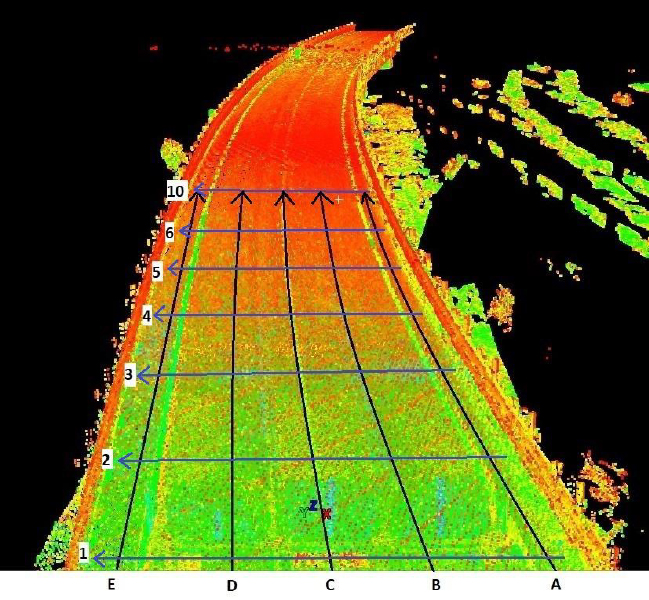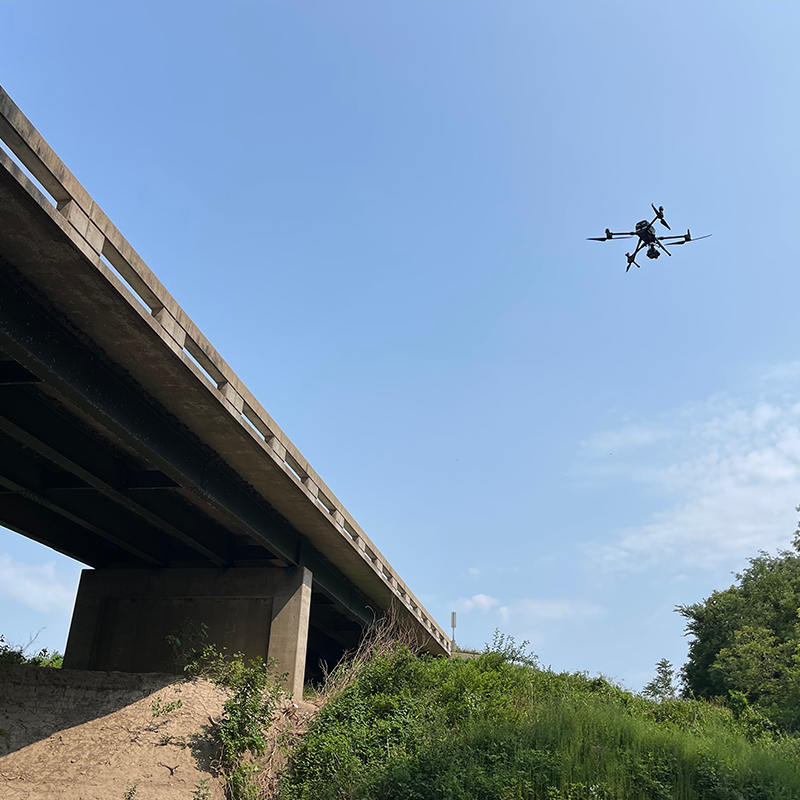News Story
Monitoring Bridge Wear and Tear—With Radar
 According to the American Society of Civil Engineers (ASCE), the number of bridges in the United States totals 614,387. In the state of Maryland alone, thousands of bridges need to be surveyed at regular intervals to ensure their continued safety.
According to the American Society of Civil Engineers (ASCE), the number of bridges in the United States totals 614,387. In the state of Maryland alone, thousands of bridges need to be surveyed at regular intervals to ensure their continued safety.
The time, effort, and expertise required can be daunting—not to mention the cost. To help improve and streamline the process, civil and environmental engineering professor DimitrIos Goulias has been developing fast, accurate, and cost-effective non-destructive (NDT) condition assessment methods, making use of Ground Penetrating Radar (GPR) and machine learning.
“We send an electromagnetic wave through a structure and examine the reflection that comes back,” Goulias said. “If there has been a change in the time it takes for the wave to go there and back, then degradation may have occurred. Other parameters, such as amplitude and signal polarity, can also indicate problems such cracks or delamination.” Similar methods can also be used to assess the conditions of sound barriers, concrete pavement, and other elements of roadway infrastructure.
 While there has long been interest in GPR as a tool for monitoring infrastructure, its potential has been constrained—until now—by the complexity of the data.
While there has long been interest in GPR as a tool for monitoring infrastructure, its potential has been constrained—until now—by the complexity of the data.
Simply put, waves have differing properties at various frequency levels, and this can affect the kind of information that GPR can obtain. As Goulias explains, “low frequency waves can penetrate deeply into a structure, but the resolution is limited. Higher frequency waves provide greater accuracy, but they don’t penetrate as far.”
One solution is to use a step frequency approach, beaming radar at the structure in a continuous gradient from 300 MHz to 2 GHz. The math involved in analyzing the results is formidable—but becomes far less so with the help of computers. A key part of Goulias’s current research is focused on developing the needed analytical and predictive algorithms using fuzzy sets, neural networks, and machine learning.
Goulias has co-authored multiple papers on the GPR-based approach, including a technical paper for ASCE, published in December 2019, and a subsequent study that tested the method in Catania, Italy. The tests showed that “GPR can provide accurate assessment of the asphalt overlay thickness, concrete cover depth and deck thickness, and location of the rebar reinforcement.”
Closer to home, the Maryland State Highway Administration has already used GPR to assess the conditions of about 1,000 bridges and plans to expand the analysis to the remaining 2,000 bridges in the state. Several other state DOTs are also considering the approach, Goulias said.
Published September 22, 2020











